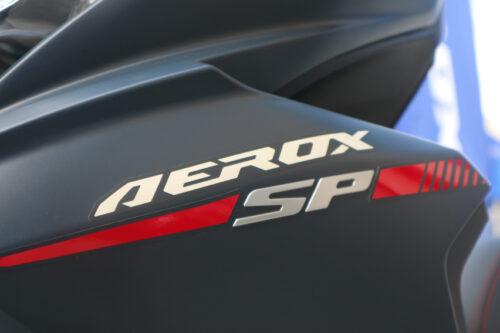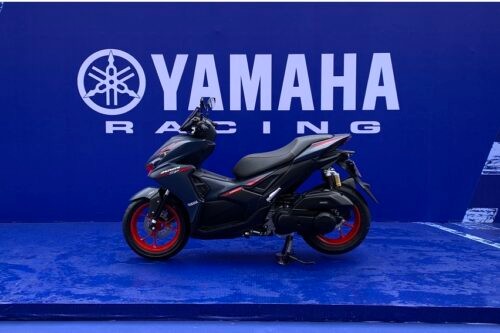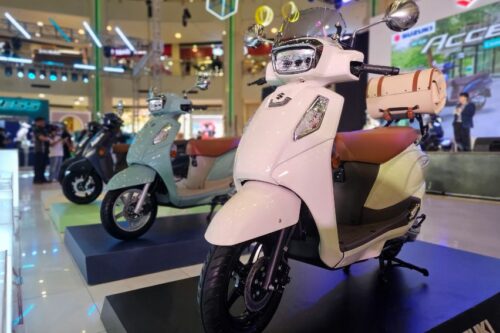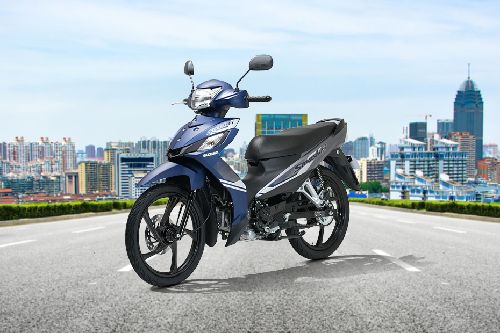Dual-sport motorcycle duel: Yamaha PG-1 vs. Suzuki Raider J Crossover
Find out which dual-sport motorcycle is better

Yamaha Motor Philippines has unleashed a new motorcycle that can potentially dominate the dual-sport category in the Philippines.
KEY TAKEAWAYS
What is the engine displacement size of the Yamaha PG-1?
The engine displacement size of the Yamaha PG-1 is 115 cubic centimeter.What is the price of the Yamaha PG-1?
The Yamaha PG-1 is priced at P96,400.The Yamaha PG-1 made its way locally with an adventurous ride at an off-road location in Antipolo followed by a program in Bridgetowne, Pasig. But, fancy fanfare is not enough to dampen the hearts of its competitors, namely the segment staple — the Suzuki Raider J Crossover.
So, which motorcycle has what it takes to earn your hard-earned money and a spot in your garage? Find out as we pit them against each other in this dual-sport motorcycle duel.
Tale of the tape
The Yamaha PG-1 measures 1,980 millimeters (mm) long, 805 mm wide, and 1,050 mm tall. It has a seat height of 795 mm and clears the ground by 190 mm. The wheelbase is 1,280 mm.

On the other hand, the Suzuki Raider J Crossover has an overall length of 1,910 mm, an overall width of 670 mm, and an overall height of 1,000 mm. The seat stands at 765 mm while its ground clearance is 145 mm. Its wheelbase is 1,220 mm.

Based on the aforementioned numbers, the Yamaha PG-1 is the beefier motorcycle of the two. It also has a higher ground clearance and a longer wheelbase.
Body
At the front, the Yamaha PG-1 wears retro-style appointments including circular headlamps (with two protruding turn signals), an H-shaped fork complete with rubber boot covers, as well as an old-school styled fender.

It lacks a proper cowling, but its analog instrument cluster appears to be built robust and can withstand the elements. It also gets naked, upright handlebars, as well as a pair of standard-looking side mirrors.
Onto its sides are fairings that have the right amounts of angles and curves. The one under the motorcycle’s leather seats in particular is slapped with the PG-1 nameplate and Yamaha branding. Bare is its engine as well as the connecting pipes that lead to the bike’s exhaust. The covers of its 5.1-liter gas tank has circular accents, which can also be found on the side panels as well as on the exhaust guard.
The rear end of the Yamaha PG-1 gets a classic-style grab bar, rounded taillamps with turn signals, and a rear fender with a reflector.
It rides on 16-inch spoked wheels wrapped in block-patterned tires.
As for the Suzuki Raider J Crossover, its design element endows it with looks that flaunt plenty of straight lines and aggressive angles. That said, its looks are more akin to enduro bikes rather than a small-displacement moped.

Its fascia wears a small cowling that serves as the housing of the headlamp. It also provides some level of protection to the instrument panel, but still not as good as one with a proper windshield. Noticeable is its beak-like fender that shares some resemblance to Suzuki’s line of adventure bikes — the V-Strom family. Under the said fender is a large-diameter front fork with booth covers.
The side of the Suzuki Raider J Crossover wears fast, aggressive-looking panels. As we’ve briefly covered above, there are no shortages of clean-cut lines as well as sharp angles. The engine is also bare as well as the tube that connects to its exhaust pipe.
Suzuki gave the Raider J Crossover standard seats, the typical ones you find on basic small-displacement motorcycles and scooters. Nevertheless, it can be wrapped in blue, red, or black upholstery depending on the color one chooses.
The hind of the Suzuki Raider J Crossover has a taillight that tapers for a sexy look. Incorporated in the same cluster are its turn signals. There’s also a rear fender with a reflector.
It rides on 17-inch spoked wheels shod in versatile semi-block tires.
This round is a tie since both dual-sport motorcycles represent the peak of their respective design languages. One can cater to the tastes of retro-style bikes while the other best suits those looking for an enduro-look motorcycle.
Engine, suspension
At the heart of the Yamaha PG-1 is a 115 cubic centimeter (cc) engine paired with a constant mesh four-speed transmission. The air-cooled, four-stroke powerplant is able to churn out as much as 8.8 horsepower with 9.5 Newton-meters (Nm) of torque.
Stopping power comes from a hydraulic disc brake at the front and a mechanical leading drum brake at the rear. It is supported by a telescopic fork and a swingarm-type suspension.
Meanwhile, the Suzuki Raider J Crossover uses a 113 cc mill, mated also to a four-speed constant mesh transmission. The said setup produces some 9.11 horses with 9.0 Nm of pulling power.
Brakes come in the form of a petal disc brake at the front and drum brakes at the rear. It has a telescopic front fork as well as a swingarm-type suspension.
This round goes to the newcomer since it boasts an engine with a larger displacement.
Safety, technology
Both motorcycles have standard safety features with the Yamaha PG-1 offering its would-be owners sufficient illumination during night rides, favorable ground clearance, as well as a reliable gas tank.
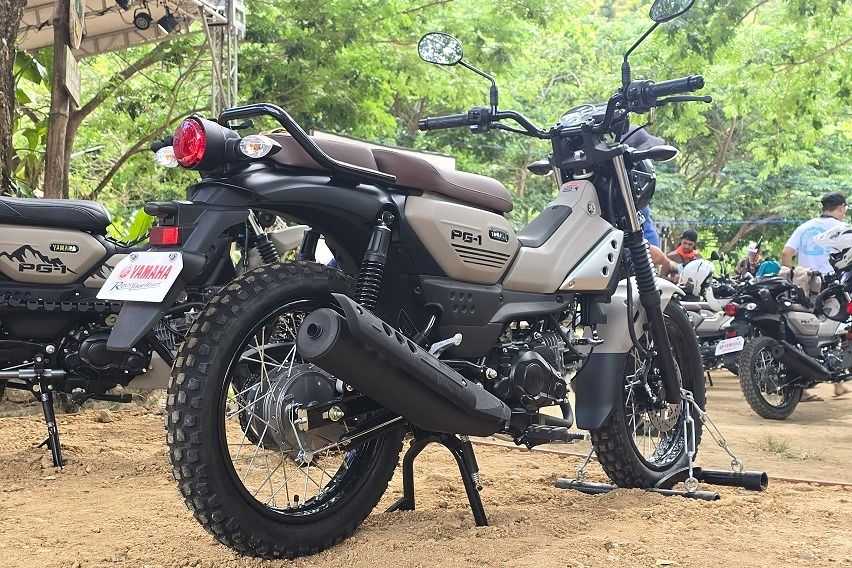
The engine is already fuel-injected, the ignition system is TCI (transistor controlled ignition), and tires are able to tackle both paved and rough roads.
Sadly, no anti-lock brake system (ABS) is available and Yamaha’s YConnect technology is not compatible with the PG-1.
The same goes for the Suzuki Raider J Crossover. It lacks ABS and the Suzuki Ride Connect app offered on the Japanese brand’s more expensive bikes.
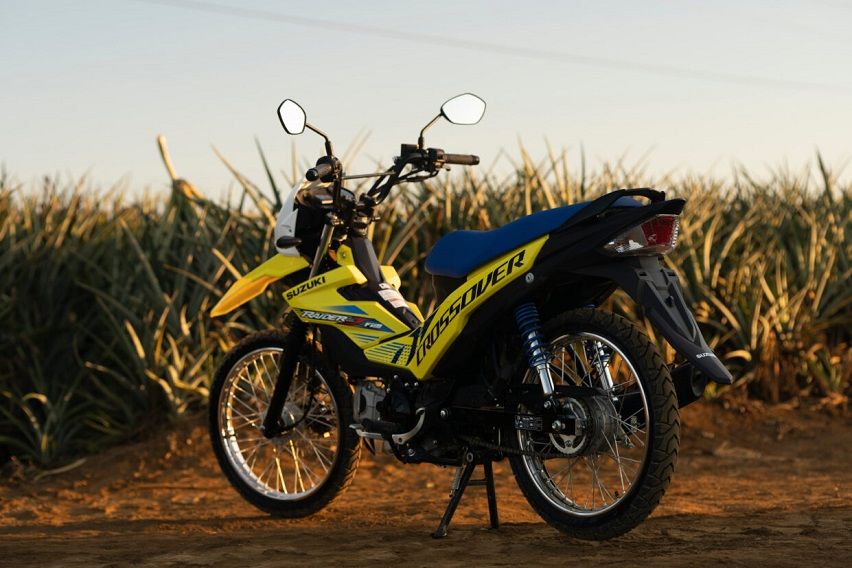
Still, it has decent ground clearance, grippy tires, and a capable engine. The fairings also appear to be light making it an easy-to-maneuver motorcycle. And while we’re on the topic of weight, the Suzuki Raider J Crossover is only 96 kilograms (kg) compared to the Yamaha PG-1, which is 107 kg.
For this round, we call it a tie.
Pricing
The Yamaha PG-1 comes in as a more expensive dual-sport motorcycle with a price tag of P96,400. The Suzuki Raider J Crossover is priced way lower at P69,900.
Verdict
Choosing between the Yamaha PG-1 and the Suzuki Raider J Crossover all boils down as a matter of preference. Both have striking looks (depending on who is looking) and have decent safety and technological features.
However, the Yamaha PG-1 edges over the Suzuki Raider J Crossover with its larger engine displacement. Meanwhile, the latter has a more appealing sticker price, which may attract more buyers.
Photos from Juan Paulo Papa, Ruben Manahan IV, and Suzuki Philippines Incorporated
Also read:
Here are the 4 available colors for the Suzuki Raider J Crossover
Yamaha PG-1 vs Suzuki Raider J Crossover Comparison
Yamaha PG-1 Related Stories
- News
Yamaha Motorcycle Models
Trending & Fresh Updates
- Latest
- Popular
You might also be interested in
- News
- Featured Stories
Yamaha Featured Motorcycles
- Latest
- Popular
Compare & Recommended

|
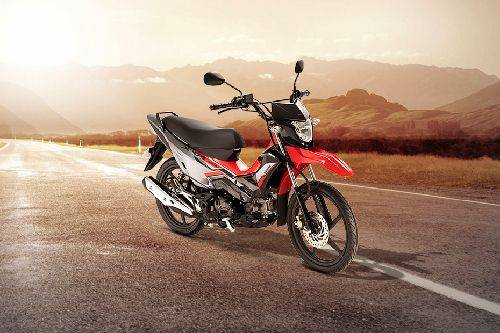
|

|

|

|
|
Engine
114
|
125
|
125
|
125
|
125
|
|
Power
9
|
9.5
|
9.5
|
9.5
|
9.5
|
|
Engine Type
Air Cooled, 4-Stroke, SOHC, 2 Valves Engine
|
Single Cylinder, 4-Stroke, SOHC Air-Cooled Engine
|
Single Cylinder, 4-Stroke, OHC Air Cooled Engine
|
Single Cylinder, 4-Stroke, OHC Air-Cooled Engine
|
Single Cylinder, 4-Stroke, OHC Air-Cooled Engine
|
|
Maximum Torque
10 Nm
|
9.55 Nm
|
9.55 Nm
|
9.55 Nm
|
9.55 Nm
|
|
Bore X Stroke
50 mm x 57.9 mm
|
52.4 mm x 57.9 mm
|
52.4 mm x 57.91 mm
|
52.4 mm x 57.9 mm
|
52.4 mm x 57.9 mm
|
|
No. Of Cylinder
1
|
1
|
1
|
1
|
1
|
|
|
Trending Moped
- Popular
Yamaha PG-1 Motorcycle Articles From Carmudi
- journal
Compare
You can add 3 variants maximum*- Brand
- Model
- Variant



















